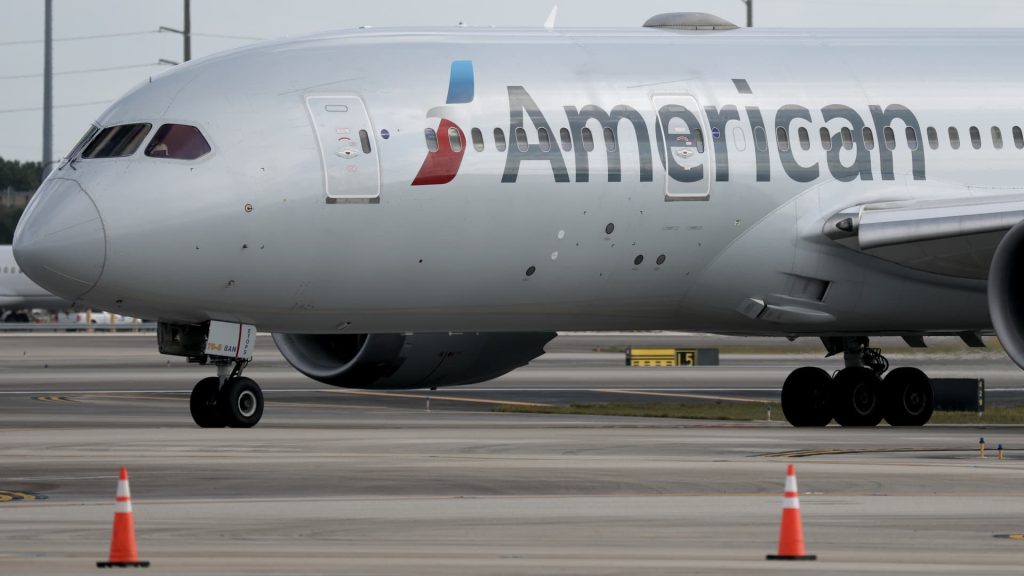American Airlines has recently withdrawn its financial guidance for 2025, reflecting the challenges faced by the airline industry amid economic uncertainty and declining leisure travel bookings. The airline’s CEO, Robert Isom, highlighted a significant drop in domestic leisure travel as the company adjusted its revenue forecasts for the upcoming quarter. This adjustment comes as American Airlines reported a wider-than-expected loss in its first quarter and signaled potential difficulties ahead in meeting Wall Street expectations.
| Article Subheadings |
|---|
| 1) Overview of Recent Developments |
| 2) Financial Performance Insights |
| 3) Factors Influencing Revenue Projections |
| 4) Corporate Travel and Economic Pressures |
| 5) Implications for the Airline Industry |
Overview of Recent Developments
On a recent Thursday, American Airlines made headlines by withdrawing its financial guidance for 2025, a move that has raised eyebrows within the industry. This decision comes amidst an increasingly unpredictable economic environment and disappointing leisure travel bookings that have continued to fall short of expectations. With air travel being a sensitive barometer for economic health, the airline’s leadership is reevaluating predictions made just a few months ago. According to CEO Robert Isom, the company experienced a “strong fourth quarter” followed by a surprising downturn in bookings for domestic leisure travel as February arrived, indicating a potential shift in consumer behavior.
Financial Performance Insights
American Airlines reported a loss of $473 million in the first quarter, a figure that starkly contrasts with the previous year’s loss of $312 million during the same period. This financial outcome was accompanied by a revenue total of $12.55 billion, which was slightly below analysts’ expectations of $12.6 billion. The airline’s adjusted loss per share was noted at 59 cents, which was better than the anticipated loss of 65 cents. Additionally, unit revenue saw a modest increase of 0.7%, primarily driven by robust international bookings and the demand for premium services. In contrast, domestic bookings have struggled significantly, indicating a divergence in consumer priorities.
Factors Influencing Revenue Projections
Looking ahead, American Airlines forecasts a potential decline in revenue for the upcoming second quarter, projecting a decrease of 2% to an increase of 1%. This forecast falls short of the 2.2% expected by Wall Street analysts and complicates the airline’s position as it prepares for a seasonal uptick in travel. As the airline increases its operational capacity by 2% to 4% compared to last year, these figures suggest a strategic pivot to capture as much market share as possible amidst broader economic challenges. This aggressive capacity increase could also imply a willingness to compete heavily for travelers who may be more discerning about where they spend their travel budgets.
Corporate Travel and Economic Pressures
Another factor complicating American Airlines’ ability to forecast is its struggle to rebuild the corporate travel segment. Following a failed business strategy, the airline has faced hurdles in attracting business travelers back. The impact of the economic environment has forced the airline to reevaluate its approach, as “economic uncertainty” is cited as a major influence on domestic leisure demand. Furthermore, the recent tragic accident of American Eagle Flight 5342, which resulted in the loss of 67 lives due to a collision with an Army helicopter, has cast further shadow over operational stability and customer confidence.
Implications for the Airline Industry
The announcement from American Airlines is not an isolated incident; other major carriers such as Delta and United Airlines have also reported similar trends, with leisure travelers exhibiting price sensitivity in their overarching travel decisions. The larger context suggests that the airline industry may find itself in a prolonged period of adjustment as it grapples with changing consumer sentiments and economic realities. As airline executives reassess their strategies to encourage travel, both domestically and internationally, the need for adaptive business models will become increasingly critical to navigate the current turbulence.
| No. | Key Points |
|---|---|
| 1 | American Airlines withdrew its 2025 financial guidance, indicating concerns about the economic outlook. |
| 2 | The airline reported a higher-than-expected loss in Q1, widening from last year! |
| 3 | Revenue projections for Q2 are expected to decline, impacting industry outlook. |
| 4 | Economic uncertainty has particularly hampered domestic leisure bookings. |
| 5 | American Airlines is seeing trouble in its corporate travel sector due to previous strategic failures. |
Summary
The recent developments surrounding American Airlines highlight the complexities currently facing the airline industry. With shifting consumer preferences and economic pressures complicating revenue forecasts, the airline’s adjustments reflect broader industry challenges. As American Airlines and its peers navigate a tumultuous recovery landscape, the implications of these changes will affect operational strategies and consumer travel choices for the foreseeable future.
Frequently Asked Questions
Question: Why did American Airlines withdraw its 2025 financial guidance?
American Airlines withdrew its financial guidance due to uncertainty in the U.S. economy and weaker-than-expected leisure travel bookings that raised concerns about future revenue.
Question: What were American Airlines’ first-quarter financial results?
American Airlines reported a $473 million loss in the first quarter, wider than the $312 million loss from the same period the previous year, and revenue of $12.55 billion, slightly below analysts’ expectations.
Question: How is American Airlines addressing its corporate travel challenges?
American Airlines is working to revive its corporate travel business after earlier missteps, but faces challenges from economic uncertainties impacting overall demand.
